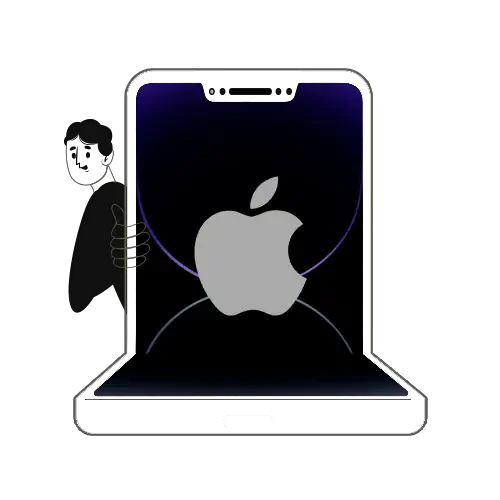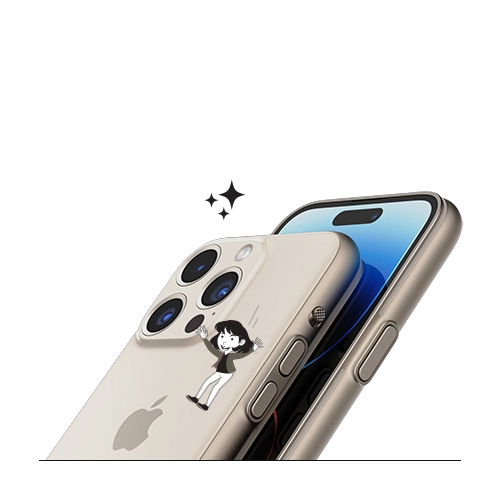Phone cameras have come a long way in the last decade or so, especially in the iPhones that have consistently set the industry standards for picture quality and camera imaging technologies.
But a camera is only as good as the user. Even the most advanced camera is not going to deliver any results if you have no clue how to use it.
So here’s a quick guide to improving your skills as a budding camera enthusiast and (hopefully) doing more than taking selfies!
Deal with low light shots
The biggest problem with low light is that even the slightest shake can cause photos to blur. To counter that, you should always try and “prop” your camera in low-light situations.
What’s “Prop”?
It means ‘to stabilize’ the phone. You can do it by either using a tripod or by placing the phone on a flat surface. You can also use the timer to free up your thumb and improve your grip on the phone. That way it won’t shake so much.
Use the volume keys to take a photo
There are two ways to fire the shutter in an iPhone — either by clicking the on-screen button or by pressing any of the volume keys. The second option is preferred as it gives you a better grip over your phone.
It also makes left-handed shots a lot easier, as the volume keys are placed at an ideal position, and can be used with the index finger.
Use HDR by default
Have you noticed that sometimes, your camera either makes the blacks too dark or the whites too bright? This happens because of a wide difference in exposures.
Your camera’s default settings are not suited to tackle such a fluctuations in exposure range. So it ignores any one end. And whichever end is left out, gets “washed out”.
Keeping your HDR (High Dynamic Range) always on eliminates this by taking multiple exposure shots and then overlapping them to make a single well-lit shot. Sure, each photo takes longer to render, but that’s a small price for beautiful pics. Isn’t quality better than quantity?
Switch the flash OFF
This might seem counter-intuitive, but it’s true. Most of the times, the flash on your iPhone is too “harsh”. In fact, why don’t you try it yourself? Take a photograph with the flash ON and then, the same one with the flash OFF.
Which gives better results? 9 times out of 10, it will be the photo taken without the flash!
There’s also the disadvantage of “perception”. Pictures taken at night with the flash ON, especially against a darker background, tend to make them look photoshopped. The effect is a shift in perception that makes you think, “Huh, this could have been taken anywhere.” Or, “It doesn’t look real.”
So unless you really, really need it, keep the flash OFF!!
Keep the light in the foreground
When taking photos, make sure that the light is falling on the subject. So that shot you’re trying to take of yourself with the sun setting behind you isn’t going to come out as dramatic as you’d expected.
Like we explained before, your camera, while adjusting for the range of exposure, will always choose the brighter places in your frame to focus. Consequently, when the light source is right behind the subject, it simply gets washed out.
And you can’t let that happen. That Instagram feed is not going to grow by itself. It needs beautiful, well-lit photos.
Pro-tip: The best angle to cast light on your subjects is from around 45 degrees. That’s 45 degrees to the right or left from you, the camera person.
Consider taking multiple shots
Usually, we just take one single photo. Or multiple photos from a single point of view. Change that. Take photos from various angles and compare to see which is the best.
Make sure to delete the other “not-so-great-looking” ones. Otherwise they’re sure to accumulate over a period of time and unnecessarily use up your iPhone’s storage. Also, who wants to keep ugly photos of themselves on their iPhone? Eeew!
Pro-tip: Don’t shy away from putting your body in weird positions to get that perfect shot. Remember, you don’t matter, only the photo does. Here’s a quick reference guide from the CameraSutra. Get up close and personal
We get that you want to show off that amazing place you’re visiting. After all, you did spend a lot of money getting there. But you need to understand that the best portrait comes by blurring out the background and filling the canvas with a cinematic closeup.
So don’t be afraid to venture closer to your subject. Photography is all about courage. Be brave. But not too brave!
Getting up early
Ok, this might not be acceptable to a lot of you, but you gotta make the effort. Think of the all the “wow dis is ossum!” comments you’re going to get on your photo!
The light at dawn (or sometimes even dusk) is ideal for photography. If you want to take pictures of nature, just after sunrise is the best time. So get up early. If nothing else, you’ll at least have breathed fresh oxygen for once in your life!
Pro-tip: Avoid taking selfies in the morning. No one wants to see you looking like this:
Make memories
You have to remember that the entire point of taking a photo is to capture that one moment in eternity and preserve the emotion you experienced. So don’t get too hung up on the technicalities. Your hair doesn’t need to be styled well in every frame, the camera doesn’t have to be angled properly, and the lighting doesn’t have to ‘picture perfect’.
Just enjoy the moment and capture it in your heart and soul.
Pro-tip: There’s a button on the right side of your iPhone. Press and hold until a “Slide to power off” message appears. Do that. Now enjoy the view in front of you. You’re welcome.




